Key takeaways:
- Texture in photography enhances narrative and evokes emotion, creating a deeper connection with viewers.
- Lighting and contrast play vital roles in showcasing textures, transforming flat surfaces into engaging elements.
- Experimenting with layering textures and contrasting materials can significantly elevate compositions.
- Mindful selection of textures is essential, as not all textures fit every scene and can influence audience perception.
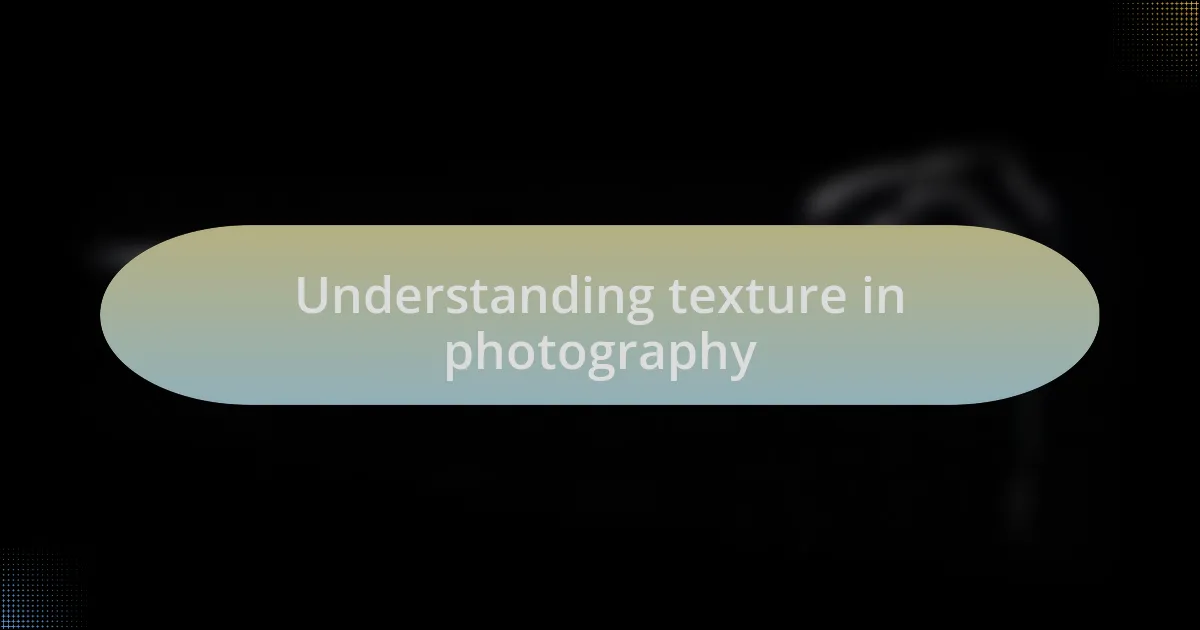
Understanding texture in photography
Texture in photography is more than just a visual element; it evokes emotion and adds depth to images. I recall a moment when I captured an old, weathered barn door. The peeling paint and rough wood grain didn’t just tell a story; they invited the viewer to imagine the countless seasons that door had weathered. Doesn’t that bring a photograph to life?
When I compose an image, I often ask myself how texture can enhance the narrative. For instance, in portrait photography, I love highlighting the texture of a subject’s skin or clothing. It creates a connection, making the viewer feel as if they can almost touch the subject. Have you ever noticed how a soft, blurred background juxtaposed with the intricate details of a person’s features can evoke a feeling of intimacy?
Light plays a crucial role in showcasing texture, transforming flat surfaces into captivating elements of a scene. I remember shooting a close-up of dewdrops on a leaf in the early morning light. The sunlight refracted through the droplets revealed the leaf’s veins in stunning detail, creating a sense of freshness and vitality. How can you use light to tell your own textured story?
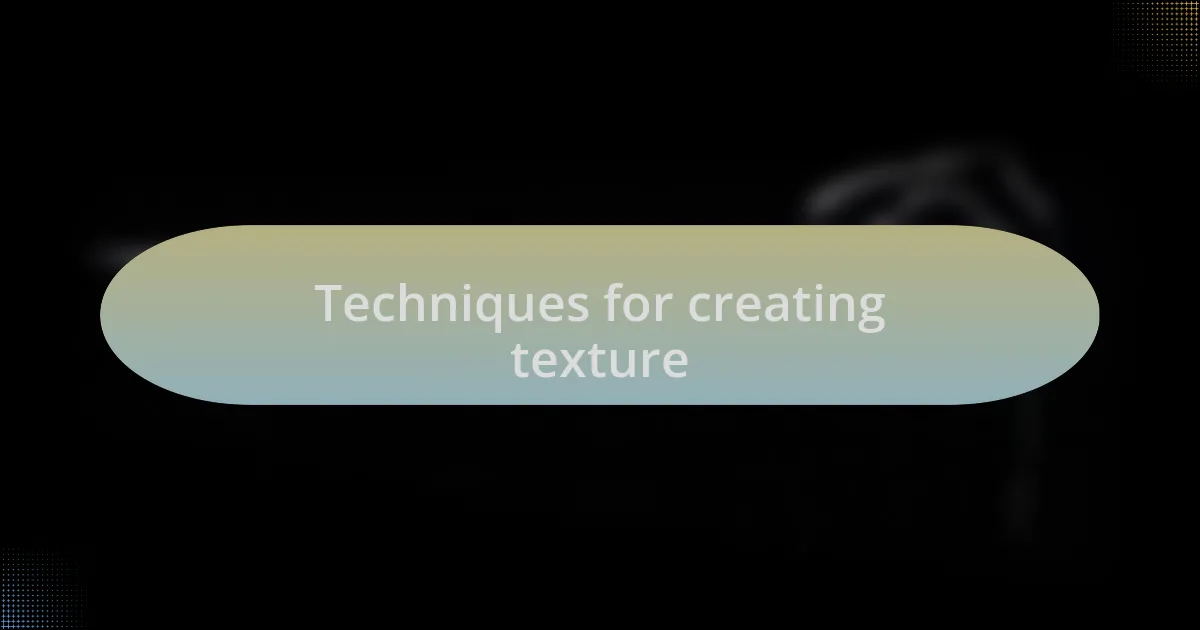
Techniques for creating texture
When I think about creating texture, I often experiment with different surfaces and materials. One technique I love is incorporating bold props or textures in my scenes. I once shot a still life that included crumpled fabric and shiny metal, contrasting soft and hard surfaces. The interplay truly captivated viewers, making them linger on the details. Have you ever thought about how contrasting textures could elevate your own compositions?
In my experience, post-processing can significantly enhance texture as well. I remember editing a landscape photograph where the rocky terrain was initially flat and uninspiring. By adjusting the contrast and clarity, I brought out the rough edges and fine details of the rocks, adding a tactile quality to the image. Isn’t it amazing how just a few tweaks can breathe new life into your textures?
Additionally, using depth of field is another effective way to highlight texture. When I photograph nature, I often employ a shallow depth of field to focus on a single element, like a vibrant flower with intricate petals, while blurring the background. This not only emphasizes the texture of the flower but also draws the viewer’s eye to its unique characteristics. Have you tried this technique to highlight textures in your own work?
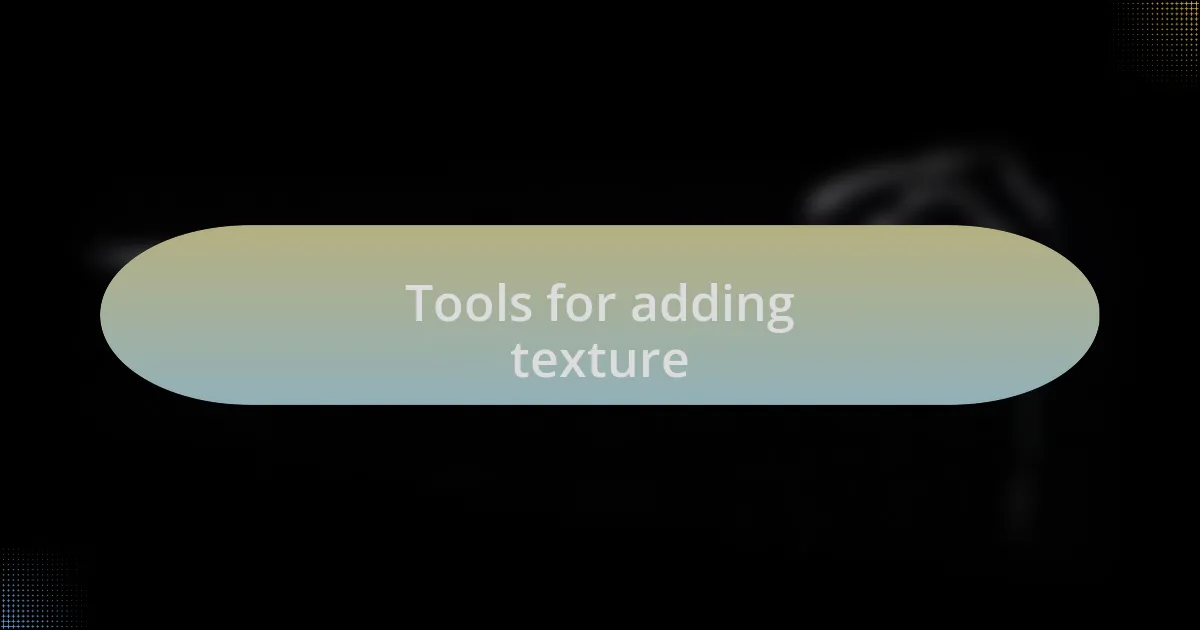
Tools for adding texture
When it comes to tools for adding texture, I find that a versatile set of brushes can make a significant difference in my digital editing process. I often gravitate towards textured brushes in Photoshop, as they allow me to paint on layers of texture that can transform an image dramatically. Once, I used a gritty brush to overlay a distressed look onto a cityscape, creating a sense of age and history. Have you ever experimented with digital brushes in your edits?
In the realm of physical tools, I can’t emphasize enough the value of textures found in the environment. Textured backgrounds, like peeling paint or rusty metal, can become essential elements in my compositions. I recall a time I stumbled upon an old barn with weathered wood siding—it added an incredible depth to my portrait shoot, giving the images a rustic feel. Doesn’t it feel rewarding to discover unexpected textures that tell their own stories?
Lastly, I love experimenting with layering techniques in both shooting and editing. In one instance, I layered multiple transparent textures in post-processing to create a dreamy effect in a floral photograph. Each layer contributed depth and richness, transforming the original image into something far more evocative. Have you thought about how layering textures can not only enhance but also completely reshape your photography?
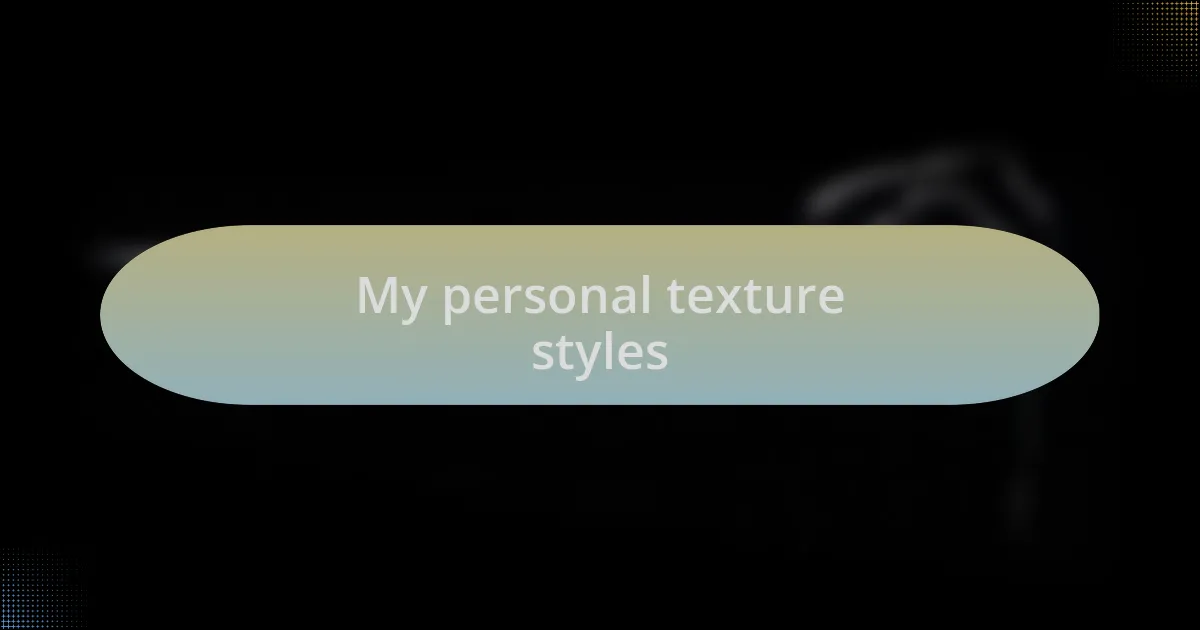
My personal texture styles
When it comes to my personal texture styles, I often draw inspiration from nature. For instance, I remember a breathtaking hike I took through a forest where every surface seemed to evoke a different emotion—bark with its roughness, the soft, velvety mosses, and the delicate patterns in leaves. Incorporating images from that hike into my work has allowed me to create a tangible connection to the serenity I felt, infusing my projects with layers of organic textures. Have you ever thought about how the natural world can inspire your creative choices?
I also love to explore the juxtaposition of different textures in urban environments. One memorable evening, I found myself photographing the interplay between smooth glass reflections and gritty concrete. The contrast created a dynamic tension that brought a sense of life to the cityscape. This blend of textures pushes me to be more intentional in my compositions. Have you ever noticed how such contrasts can evoke strong feelings in your audience?
In my post-processing workflow, I enjoy embracing imperfection. I often incorporate grainy textures that resemble film photography to evoke nostalgia in my digital images. I vividly recall enhancing a portrait with a soft grain overlay, which transformed it into a piece that felt timeless and intimate. It’s incredible how a small texture alteration can evoke such profound emotions. Have you experimented with adding imperfections to enhance the story behind your photographs?
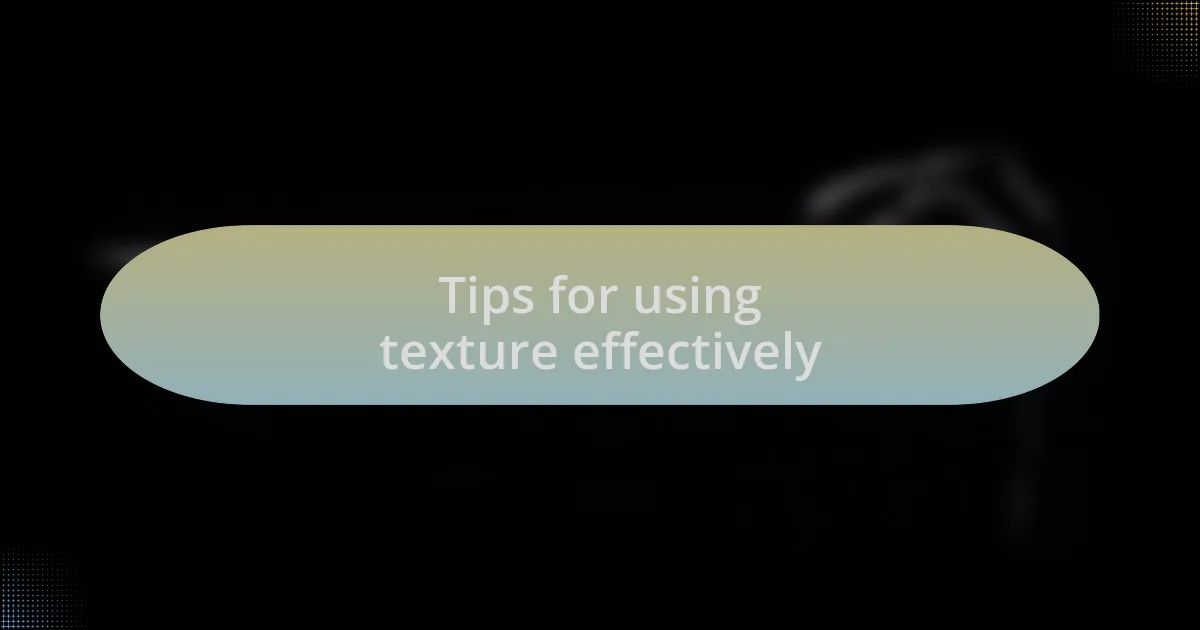
Tips for using texture effectively
Using texture effectively can truly elevate your photography. One tip I find invaluable is to layer textures in your compositions. I often recall a photo shoot by the ocean where I combined the roughness of beach sand with the smooth surface of water. This layering brought an interplay that told a more compelling story of the seaside environment. Have you ever considered how multiple textures can create depth in your images?
Another technique I recommend is to think about lighting when capturing textures. I once experimented during the golden hour, illuminating a weathered wooden fence. The warm light highlighted the grain and imperfections, showcasing the character that might have gone unnoticed. What about you? How much does lighting influence your perception of textures in your photos?
Lastly, it’s crucial to be mindful of the textures you choose to highlight. I’ve learned that not every texture works for every shot. For example, while capturing a bustling market scene, I focused on the vibrant fabrics of the stalls instead of clean, stark backgrounds. This choice pulled viewers into the rich tapestry of life in that moment. Have you found that certain textures resonate more with your audience than others?